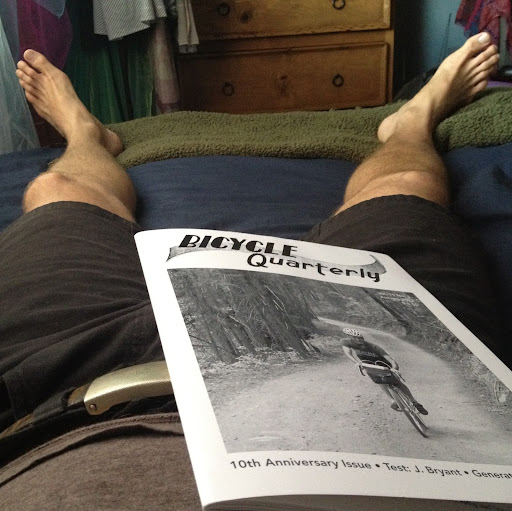Steven L Mattson
age ~64
from Holland, MI
- Also known as:
-
- Steven Lloyd Mattson
- Steven M Mattson
- Steven L Matison
- Phone and address:
-
6243 Woodcliff St, Holland, MI 49423
6163969952
Steven Mattson Phones & Addresses
- 6243 Woodcliff St, Holland, MI 49423 • 6163969952
- 11941 Jonker Way, Holland, MI 49424 • 6163969952
- 227 21St St, Holland, MI 49423 • 6163934998
- Zeeland, MI
- Fennville, MI
- Benton Harbor, MI
- Jenison, MI
- Rancho Mirage, CA
Vehicle Records
-
Steven Mattson
view source -
Address:11941 Jonker Way, Holland, MI 49424
-
Phone:6163969952
-
VIN:3FAHP07Z79R174542
-
Make:FORD
-
Model:FUSION
-
Year:2009
Medicine Doctors

Steven R. Mattson
view sourceSpecialties:
Internal Medicine, Family Medicine
Work:
Trinity Family Medicine
1500 24 Ave SW STE 103, Minot, ND 58701
7018575343 (phone), 7018575063 (fax)
1500 24 Ave SW STE 103, Minot, ND 58701
7018575343 (phone), 7018575063 (fax)
Education:
Medical School
Michigan State University College of Human Medicine
Graduated: 1982
Michigan State University College of Human Medicine
Graduated: 1982
Procedures:
Arthrocentesis
Destruction of Benign/Premalignant Skin Lesions
Skin Tags Removal
Vaccine Administration
Cardiac Stress Test
Circumcision
Electrocardiogram (EKG or ECG)
Psychological and Neuropsychological Tests
Pulmonary Function Tests
Destruction of Benign/Premalignant Skin Lesions
Skin Tags Removal
Vaccine Administration
Cardiac Stress Test
Circumcision
Electrocardiogram (EKG or ECG)
Psychological and Neuropsychological Tests
Pulmonary Function Tests
Conditions:
Abdominal Hernia
Acne
Acute Bronchitis
Acute Pharyngitis
Acute Sinusitis
Acne
Acute Bronchitis
Acute Pharyngitis
Acute Sinusitis
Languages:
English
Description:
Dr. Mattson graduated from the Michigan State University College of Human Medicine in 1982. He works in Minot, ND and specializes in Internal Medicine and Family Medicine. Dr. Mattson is affiliated with Trinity Hospital.
Us Patents
-
Fence Connector Assembly
view source -
US Patent:49519255, Aug 28, 1990
-
Filed:Jan 28, 1988
-
Appl. No.:7/149691
-
Inventors:David H. Schultz - Grand Haven MI
Steven W. Mattson - Muskegon MI
Donald E. Heinz - West Olive MI -
Assignee:Alternate Number Thirteen - Grand Haven MI
-
International Classification:E04H 1714
-
US Classification:256 65
-
Abstract:A fence and connector assembly having connector brackets mounted near the top and bottom of the fence posts, each bracket having a vertical sleeve and side flange members spaced to receive the ends of rails therebetween, and L-shaped bracket securing and rail mounting studs between the flange members. The rails have limited pivotal movement on the distal ends of these studs to accommodate uneven terrain, and are secured thereon by spring retainers within the rails. Between the vertically spaced, generally horizontal rails are vertical rungs, each having its lower end in aperture in the lower hollow rail and its upper end in an aperture into the upper hollow rail. Locking rods extend through the rails and through these transverse apertures adjacent the ends of the rungs, securing the rungs to the rails.
-
Fence Connector Assembly
view source -
US Patent:49865137, Jan 22, 1991
-
Filed:May 7, 1990
-
Appl. No.:7/520275
-
Inventors:David H. Schultz - Grand Haven MI
Steven W. Mattson - Muskegon MI
Donald E. Heinz - West Olive MI -
Assignee:Harbor Towne Fence, Inc. - Grand Haven MI
-
International Classification:E04H 1714
-
US Classification:256 65
-
Abstract:A fence and connector assembly having connector brackets mounted near the top and bottom of the fence posts, each bracket having a vertical sleeve and side flange members spaced to receive the ends of rails therebetween, and L-shaped bracket securing and rail mounting studs between the flange members. The rails have limited pivotal movement on the distal ends of these studs to accommodate uneven terrain, and are secured thereon by spring retainers within the rails. Between the vertically spaced, generally horizontal rails are vertical rungs, each having its lower end in an aperture in the lower hollow rail and its upper end in an aperture into the upper hollow rail. Locking rods extend through the rails and through these transverse apertures adjacent the ends of the rungs, securing the rungs to the rails.
Resumes

Steven Mattson
view sourceLocation:
United States
Skills:
Customer Service
Microsoft Excel
English
Microsoft Office
Microsoft Word
PowerPoint
Photoshop
Microsoft Excel
English
Microsoft Office
Microsoft Word
PowerPoint
Photoshop
Name / Title
Company / Classification
Phones & Addresses
GREAT EVENTZ
President,Chairman
MATTSON AND ASSOCIATES INC
CONTEMPORARY BALLOONS, LLC
Plaxo

Steven Mattson
view sourceCreative Distinctions
Classmates

Steven Mattson
view sourceSchools:
Ontonagon High School Ontonagon MI 1990-1994
Community:
Gregg Gardner

Steven Mattson
view sourceSchools:
Minot High School Minot ND 1969-1973
Community:
Dennis Lally, Patricia Lambert

Steven Mattson | Faribaul...
view source
Rolette High School, Role...
view sourceGraduates:
Steven Mattson (1967-1971),
Todd Laframboise (1978-1982),
Diane Arstein (1977-1981),
Amanda Rost (1996-2000)
Todd Laframboise (1978-1982),
Diane Arstein (1977-1981),
Amanda Rost (1996-2000)
Youtube
Myspace
Googleplus

Steven Mattson
Work:
Bikerowave - Head Mechanic (8)
Self-Employed - Camera Assistant
Self-Employed - Camera Assistant
Education:
Montana State University - Bozeman - Art, New York University - Film, University of Santa Monica - Counseling Psychology

Steven Mattson
Work:
University of Michigan

Steven Mattson

Steven Mattson

Steven Mattson

Steven Mattson

Steven Mattson
view source
Steven Mattson
view source
Steven Mattson
view source
Steven Mattson
view source
Steven Mattson
view source
Steven Mattson
view source
Steven Mattson
view source
Steven Mattson
view sourceFlickr
Get Report for Steven L Mattson from Holland, MI, age ~64














